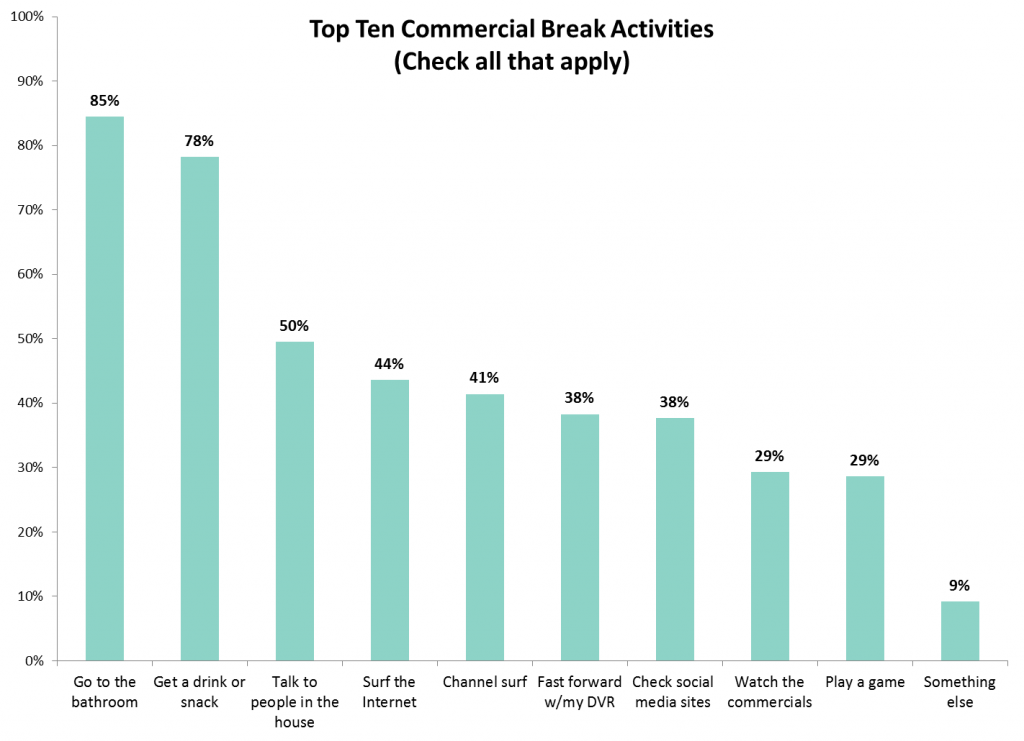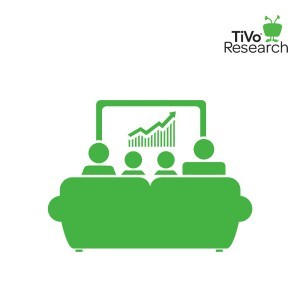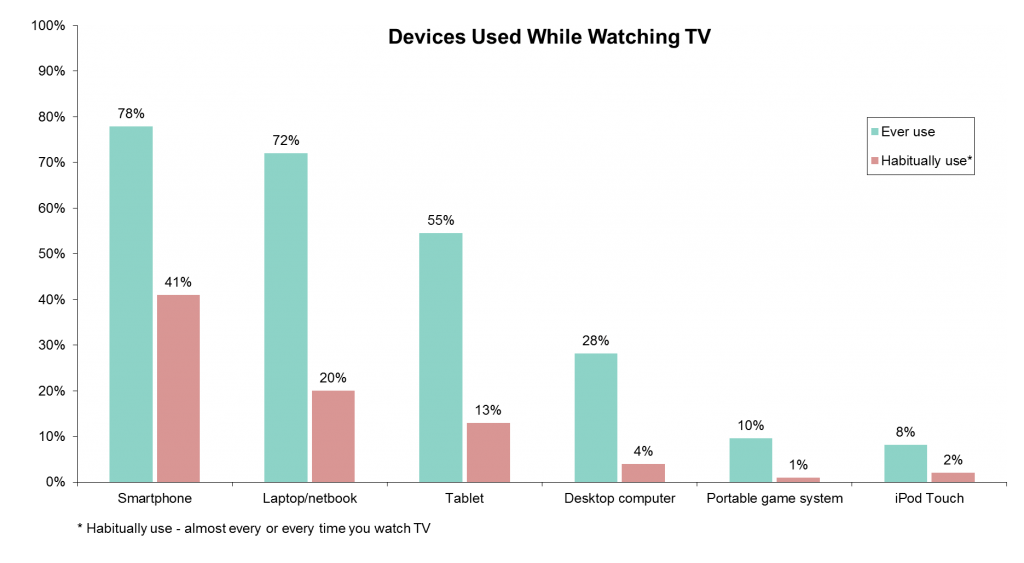Today TiVo revealed results from its Second Annual TiVo Multitasking and Social TV Survey. The results indicate a dramatic increase in multitasking during TV viewing: over half of the 856 survey respondents reported multitasking every time or almost every time they watch TV (51 percent); compared to just over one third (36 percent) in last year’s survey.
Though TV multitasking may be on the increase, viewers also report an increase in TV viewing as the primary focus: 47 percent of respondents’ total TV time is spent with their primary attention on the TV show while multitasking, versus last year’s 39 percent. Twenty six percent of their TV time is spent multitasking with their main focus on another task, similar to the 2013 study, and 27 percent of their TV time is spent only watching TV (not multitasking), down from 35 percent in 2013.
Despite the pronounced increase in TV multitasking, viewers continue to report that their alternate activities are only rarely related to the program being watched. Only 5 percent of respondents report TV-related multitasking every time or almost every time they watch TV, while 50 percent report never or almost never engaging in TV-related multitasking. Top TV-time activities include browsing the Internet (74 percent), reading or sending email (73 percent) and text messaging (71 percent).
“Even given the proliferation of multitasking, viewers remain primarily focused on the television shows they are watching,” said TiVo Chief Research Officer Jonathan Steuer. “To paraphrase the Bard, the program’s the thing!”
Online engagement with favorite programs has indeed become commonplace: 61 percent of respondents report searching the Internet for information about the programs they watch and 47 percent have “liked” a show’s official Facebook page. However, these activities do not usually occur while watching the program.
The Milton Berle Effect
In the early 1950s there were reports of significant drops in water pressure during The Milton Berle Show’s commercial breaks. Apparently, even with the preponderance of DVRs, times have not changed that much, as 85 percent of respondents reported going to the bathroom during commercial breaks. Even 81 percent of those with a DVR reported trips to the loo during commercial breaks. Other popular activities include getting a drink or snack (78 percent), talking to people in the house (50 percent) and surfing the Internet (44 percent).

#LowFavorability
Sixty-three percent have noticed Twitter hashtags displayed during television shows, but of this group, only 12 percent liked seeing hashtags while 53 percent disliked them. A similar trend occurs with onscreen polls; 37 percent have noticed them, and within this group, 20 percent liked and 45 percent disliked the polls.
Additional Key Findings
- Ninty-four percent of respondents reported that they have multitasked while watching TV.
- The smartphone (78 percent) and the laptop (72 percent) are the two most popular devices used while watching TV (see graph below).
- Fifty-eight percent of respondents reported that they use another device almost every or every time they watch TV.
- During commercial breaks, 56 percent of respondents report multitasking every time or almost every time.
- Twenty-five percent of those surveyed said searching the Internet for information about a program is the top activity that increases their enjoyment of TV; reading episode recaps and reviews comes in second at 10 percent.
- Only 22 percent reported ever posting on social media sites about shows they watch; 5 percent of all respondents do this a few times a week or more.
- Of those who do post to social media about their TV faves, the majority (71 percent) selected Facebook as the site they most commonly post about TV; Twitter came in a distant second with 24 percent.
Survey Methodology
To collect data for the 2014 Multitasking and Social TV Survey, TiVo conducted an online survey of 856 people between August 21-26, 2014. All survey participants were over the age of 18 and watched at least seven hours of TV per week on any device. The composition of the survey was consistent with the U.S. in terms of household income and age range. Additional details about this survey and other TiVo research are available from TiVo Research (http://tivoresearch.com and insights@tivoresearch.com).
About TiVo Research and Analytics, Inc.
TiVo Research and Analytics, Inc., a wholly-owned subsidiary of TiVo Inc. (NASDAQ: TIVO), is a leading media marketing and analytics software company whose products help advertisers, agencies and television networks improve advertising targeting, accountability and return on media investment within the Automotive, Consumer Packaged Goods, and Pharmaceutical industries, as well as a growing number of client CRM engagements. TiVo Research’s web-based Media TRAnalytics® and TV Health Ratings platforms matched the TV advertising households actually receive with the products the same households actually buy, enabling clients to find “The Right Audience®” while providing an unmatched level of transparency, measurement, media planning/selling and improved ROI. TiVo Research clients include Procter and Gamble, CBS, A&E Television Networks, ION Media, Oscar Mayer, Sunovian and Starcom MediaVest Group.


